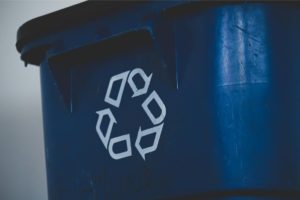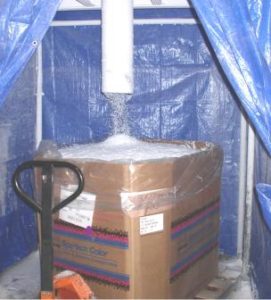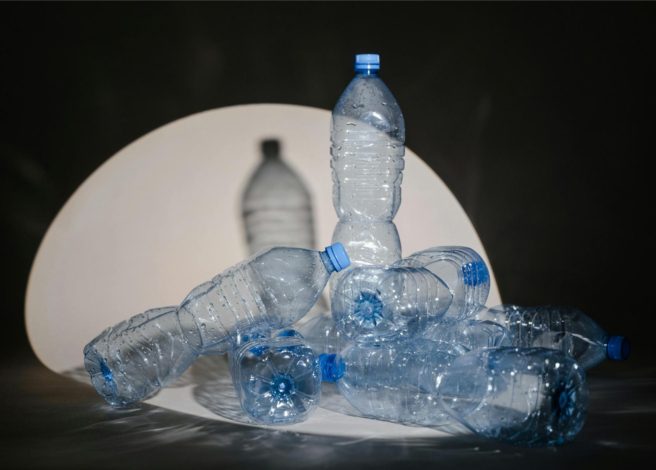At a Glance
- PCR content in PET packaging helps food businesses meet rising sustainability demands while keeping product quality and profitability intact.
- Regulations, consumer expectations, and supply chain limits make recycled content adoption both urgent and challenging.
- Success depends on five steps: Audit current packaging, set realistic PCR content targets, partner with certified suppliers, implement strict quality controls, and communicate progress.
- Companies that master PCR material integration in PET packaging not only comply with rules but also gain trust, resilience, and a competitive market advantage.
You’re facing tough choices daily as a food industry pro. Customers demand sustainable packaging. Regulations are tightening. Competitors are making bold environmental claims. Yet every “eco-friendly” option comes with hidden costs, quality compromises, or supply chain nightmares. Is your go-to reaction to change simply flying into a blind panic? It’s okay. You’re not alone.
Food business professionals worldwide are caught between doing right by the planet and protecting their bottom line. The pressure to adopt post-consumer recycled (PCR) content in food packaging has never been higher — and the stakes keep rising.
Inline Plastics has more than 55 years of experience in the fresh food packaging industry. We have learned a lot about using PCR materials in PET packaging.
In this guide, you will find out why PET (Polyethylene Terephthalate — a common, lightweight material) plastic is your best choice for PCR content adaptation. You will learn the five key steps for successful implementation that maintain quality and profit. Also, you’ll see how to turn sustainability challenges into competitive advantages. Most importantly, you’ll walk away with a clear action plan that works in the real world of food packaging.
The Problem: A Perfect Storm of Challenges
 Here’s what’s keeping food industry leaders awake at night:
Here’s what’s keeping food industry leaders awake at night:
Regulatory pressure is mounting. New mandates are rolling out faster than you can adapt. Europe’s 25% recycled content requirement by 2025 is just the beginning. Similar regulations are spreading globally, and non-compliance isn’t an option.
Customer expectations have shifted. We’re not just talking about the “sauce on the side” request. Today’s consumers don’t just want sustainable packaging — they expect it. They research brands, compare their environmental commitments, and make buying choices based on sustainability. Fall behind, and you lose market share.
The information gap is dangerous. You’re being bombarded with conflicting information about PCR material. Marketing campaigns claim big results, but technical reports tell a different story. They often highlight concerns about clarity, sustainability, and safety. Without clear, actionable intelligence, you’re making decisions in the dark.
The stakes keep rising. Every choice in packaging impacts product quality, brand image, and profits. Choose wrong, and you might deal with product failures, customer backlash, or even regulatory penalties. But you know… “No pressure.”
The Solution: Strategic PCR Content Integration with PET
The key isn’t picking between sustainability and business success. It’s about finding the sweet spot where both can thrive. Here’s how innovative food companies are winning with PCR materials:

Master the material science. PET stands out among plastics for a reason. PET is unique among polymers. It avoids issues with contamination and processing. Additionally, it has a reliable recycling system and established quality standards. Understanding PET’s unique properties allows you to maximize PCR content without sacrificing performance.
Navigate supply chain realities. Innovative companies don’t fight market forces — they work with them. NAPCOR’s 2023 PET Recycling Report shows North American PET recycling rates (just over 40%) may lag behind Europe’s ~60% PET collection and ~75% beverage-bottle recycling rates, indicating that Europe’s stronger regulatory frameworks, deposit-return systems, and waste management infrastructure play a key role in closing the recycling gap, per data from Business Wire.
Optimize the blend. The key isn’t using 100% PCR content. It’s about mixing post-consumer flake, post-industrial content, and virgin resin. This mix should fit your needs and keep costs down.
Your 5-Step Plan for PCR Content Success
Let’s roll up our sleeves and get to work. Here’s your guide to using PCR materials in PET packaging while keeping quality and profit intact:
Step 1: Assess Your Current Position
Start with a comprehensive audit of your existing packaging portfolio. Find products that can handle higher PCR content percentages and those that need a more cautious approach. Map your current supply chain relationships and identify potential PCR material suppliers.
Step 2: Set Strategic Targets
Establish realistic PCR content goals based on your specific application — not broad industry averages. Products requiring very high clarity (e.g. optical-grade PET bottles, transparent medical packaging) may begin with under 15% PCR materials, while more forgiving formats like opaque detergent jugs, HDPE milk bottles, or colored rigid tubs can accept 50% or more. Create a timeline that allows for testing and optimization.
Step 3: Build Supply Chain Partnerships
 Develop relationships with certified PCR content suppliers who understand food-grade requirements.
Develop relationships with certified PCR content suppliers who understand food-grade requirements.
Step 4: Implement Quality Control Systems
Set up tests to check visual and functional properties as PCR content rises:
- Define sustainability goals clearly.
- Set product clarity levels that meet user needs.
- Ensure criteria align with both sustainability and clarity.
- Regularly review and adjust criteria as needed.
Build feedback loops to optimize your PCR material blend continuously.
Step 5: Communicate Your Success
Develop messaging that explains your PCR content strategy to customers, regulators, and stakeholders. Be transparent about your approach while highlighting the benefits of PET’s recyclability. Use your PCR material adoption as a competitive differentiator.
What Happens When You Get This Right
Companies that excel in PCR content integration with PET packaging go beyond regulatory requirements. They don’t just satisfy customer demands — they anticipate them. Most importantly, they don’t just survive market pressures — they turn them into competitive advantages. They also don’t just make Mother Nature smile — they get a thumbs-up from her (maybe a high-five if you’re lucky!)
Customers trust your brand more when they see real commitment to sustainability and smart actions. Your operations will become more resilient as you build expertise in emerging materials and supply chains. Your business will be positioned ahead of competitors still struggling with the basics.
The Time for PCR Content is N-O-W
 The path to PCR content success in PET packaging isn’t mysterious — it’s methodical. It requires understanding the science, respecting the economics, and implementing it precisely. Most importantly, it requires starting now, not next quarter or next year.
The path to PCR content success in PET packaging isn’t mysterious — it’s methodical. It requires understanding the science, respecting the economics, and implementing it precisely. Most importantly, it requires starting now, not next quarter or next year.
You have the opportunity to transform packaging challenges into packaging advantages. You can meet regulatory requirements while improving your market position, satisfy customer demands while protecting your profitability, and more.
The companies that will do well in sustainable packaging are planning ahead today. The question isn’t whether you’ll eventually adopt PCR material in your PET packaging — it’s whether you’ll lead the transition or follow it.
The time for waiting is over. The opportunity for leadership is now.
Are you interested in learning more about packaging sustainability? Visit our Learning Center today for all things plastic!

